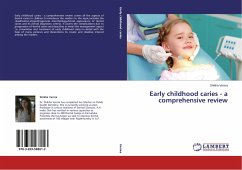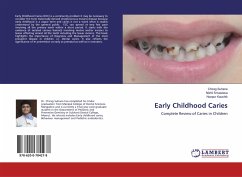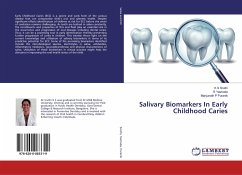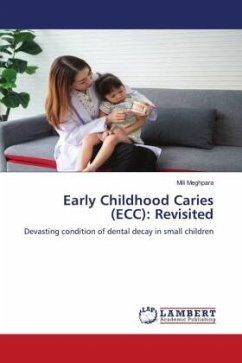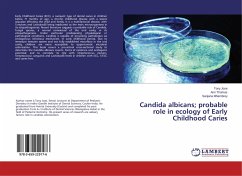
Early Childhood Caries
Versandkostenfrei!
Versandfertig in 6-10 Tagen
29,99 €
inkl. MwSt.

PAYBACK Punkte
15 °P sammeln!
Dental caries is a preventable disease; it typically begins in enamel and progresses slowly in its early stages. Cavitation of the tooth structure is a late-stage development of the disease. Before cavitation, the progress of the disease may be arrested or reversed if a favorable oral environment can be achieved. Even after cavitation occurs, if the pulp is not yet involved and if the cavitated area is open enough to be self-cleansing (plaque-free), the caries process can halt and the lesion can become "arrested.American Academy of Pediatric Dentistry (AAPD) defines it as "the presence of one ...
Dental caries is a preventable disease; it typically begins in enamel and progresses slowly in its early stages. Cavitation of the tooth structure is a late-stage development of the disease. Before cavitation, the progress of the disease may be arrested or reversed if a favorable oral environment can be achieved. Even after cavitation occurs, if the pulp is not yet involved and if the cavitated area is open enough to be self-cleansing (plaque-free), the caries process can halt and the lesion can become "arrested.American Academy of Pediatric Dentistry (AAPD) defines it as "the presence of one or more decayed (non-cavitated or cavitated lesions), missing (due to caries) or filled tooth surfaces" in any primary tooth in a child 71 months of age or younger. In children younger than 3 years of age, any sign of smooth surface caries is indicative of severe early childhood caries (S-ECC). From ages 3 through 5, one or more cavitated, missing (due to caries) or filled smooth surfaces inprimary maxillary anterior teeth or a decayed, missing, or filled score of >4 (age 3), >5 (age 4), or >6 (age 5) surfaces constitutes S-ECC.



